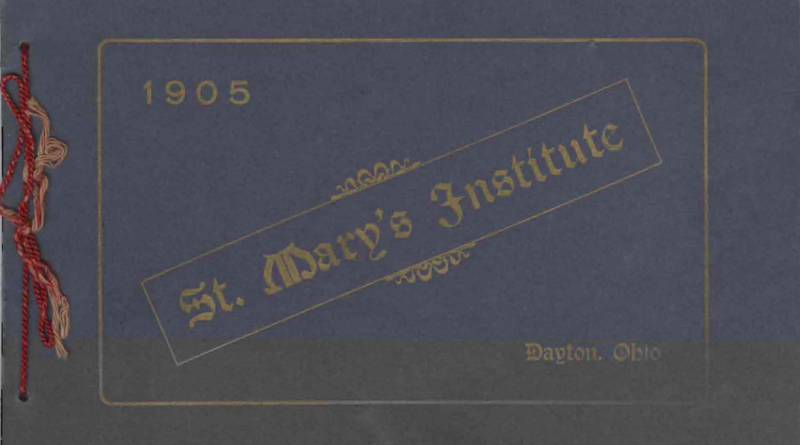UD’s Archives Is This Campus’ Hidden Gem
Garrett Reese
Contributing Writer
A 16th century antiphonary, a 15th century prayer book and three different Papal bulls are all pieces of history available to UD students and faculty to see at the University of Dayton Archives.

In the Archive reading room on the second floor of Albert Emanuel Hall, students can request any item of historical importance to view, to just hold or to research.
“I really enjoy connecting people with information,” said Kristina Schulz, the head archivist. “I especially like trying to integrate the special collection into the undergraduate program.”
Other items in the Archives’ collection include yearbooks dating back to UD’s days as St. Mary’s Institute for Boys, the original charter that established the university, writings and research from UD faculty, a large collection of musical instruments from around the world donated by a former UD music professor and photographs detailing the growth of the university. These items are only a fraction of the entire university collection.

Providing the public with access to almost everything in the Archives is a key goal, Schulz said. The center often turns down items offered by other university departments if the item won’t be readily accessible.
Presidential records from 1968 to the present, financial items that are still being paid and policy items that are in the planning stages by the Board of Trustees are among the few confidential items.
Schulz said she loves to show items like St. Mary’s scholastic achievement medals awarded to students in the 19thand early 20thcenturies and freshmen beanies from the early 20thcentury. These beanies were given to every freshman on campus and were meant to make them stand out to the upperclassmen, who often took advantage of them. It wasn’t uncommon for an upperclassman to force freshmen to carry the upperclassman’s books to class.
One beanie is resting in a display case along with an Etch-A-Sketch that has UD’s chapel drawn on it, some photographs of the university throughout its history and various other memorabilia from UD.
Besides these, the Archives also has a wide collection of rare books. Dr. Fred Jenkins, UD’s associate dean of Collections and Operations, said he particularly likes a handwritten and illustrated prayer book from the 15thcentury and a copy of James Joyce’s book “Ulysses” with illustrations by Henri Matisse. Not many of these books were published due to a falling out between Joyce and Matisse during the signing process, according to Jenkins.

Holding an item like the illustrated “Ulysses” creates a connection between the one holding it and the history contained in the item, Jenkins said. Schulz agreed.
“I think that it’s really important for students to look at documents people use for research because they get to form their own opinions,” Schulz said. “They’re not looking at a secondary source that has digested that information and told them what to think about it. Instead, they’re learning how to think critically about things and form their own opinion. It’s a universal skill.”
That’s why Dr. David Darrow, a UD history professor specializing in Russian history, is pushing to get his students more active in researching in the Archives. Darrow, along with other faculty in the history department, started the Arena Project, where seniors find documents related to the UD arena in the Archives during their capstone history class. The project ties in with the arena’s 50thanniversary and shows how the building impacted the university and the Dayton community. The seniors’ work can be found at daytonarenahistory.org.
Other classes also come through the Archives to work with items housed there. Various music classes sing from the 16thcentury antiphonary. Some SSC 200 classes conduct research at the Archives on a variety of topics.
UD faculty are working to attract more student engagement through the Internet. Schulz, Jenkins and Darrow agree that physically handling the items and being in the Archives is important, but not many people are coming in. The hope is if this information is compiled on an online database, more people will use the Archives.
“As we digitize more collections, people will see what we have, and they’ll want to come in and see the objects,” Jenkins said.
On eCommons, UD’s open-access institutional repository, students can find files of items housed in the Archives. Photos and a video of the Dayton Flood of 1913 can be found on eCommons, along with a collection of work done by notable alumni such as Congressman Charles W. Whalen, Jr. and local media personality Bette Rogge Morse. There are around two terabytes of information stored on eCommons, and Schulz said they would like to digitize more.
Schulz, Jenkins and Darrow said they hope people go to the Archives to hold items like the 16thcentury antiphonary and the 15thcentury prayer book. They want people to leaf through yearbooks to see how Flyers used to live on campus and want students to know that research can be done in the Archives through an abundance of primary sources. But they worry an online presence may not be enough, so they want to make sure students know there is an option to see the physical items.
“My greatest fear in the digital age is that so much stuff that we use as primary sources like letters just vanish,” said Darrow. “How will you write a history of your generation if most of your interactions with each other are online and stuff like ‘snapcrap’ just disappears instantly? If the past is not preserved, there is no way to challenge the assertions of politicians on what happened and why.”
Schulz said UD exists to educate. It’s up to the students to find their own way to the University of Dayton Archives.
Photos courtesy of Kristina Schulz

